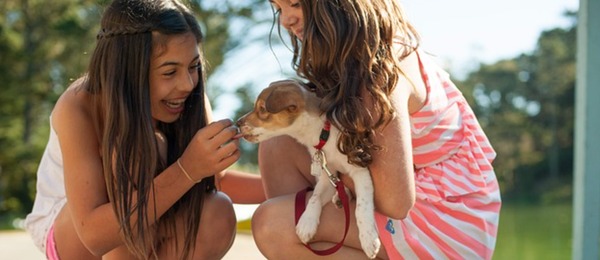There’s something magical about hearing a parrot mimic human speech. It’s like bridging the communication gap between species. Teaching your parrot to talk is a fun challenge and a fantastic way to strengthen the bond between you and your feathered companion. With patience, positivity, and the proper techniques, you’ll be amazed at how quickly your parrot starts talking back. This guide breaks down the process into simple, actionable steps.
Understanding Parrots and Their Talking Ability
Parrots are unique in the animal kingdom for their remarkable ability to mimic human speech. However, this ability varies based on species, personality, and even individual quirks.
Why Parrots Talk
The science behind a parrot’s talking skills lies in its vocal anatomy. Unlike humans, parrots don’t have vocal cords. Instead, they use their syrinx—a specialized organ at the base of their trachea—to produce sounds. In the wild, parrots mimic sounds as part of their natural communication, whether to attract a mate, call their flock, or respond to environmental cues.
You might find it interesting to learn more about parrots’ mimicry skills at ParrotParrot.
Best Talking Parrot Breeds
Some parrot species are better talkers than others. For example, African Greys are famous for their impressive vocabularies and clear diction. Amazon parrots also make excellent talkers, with many showing off a playful, musical tone. Smaller species like Budgerigars (Budgies) are surprisingly adept at speech, even though their tiny size might make their voices harder to discern. For more insights, check out this list of best talking bird species.
Keep in mind, though, not all parrots will talk, even within these typically talkative breeds. This depends on their environment, natural mimicry skills, and how much time you spend training them.
Key Factors That Influence Talking
Several factors can affect your parrot’s ability to pick up language. Younger parrots are generally more receptive to learning, so starting early can help. Their environment also plays a significant role—parrots raised in quiet, one-on-one settings may learn human speech faster than those in noisy, communal spaces. Lastly, your bond with the bird influences learning; parrots that trust their owners are more inclined to mimic their speech.

Preparing to Teach Your Parrot to Talk
Before you dive into training, it’s essential to set the foundation by ensuring your parrot is comfortable, healthy, and ready to learn.
Building a Bond with Your Parrot
Parrots are social creatures, and trust is the cornerstone of any successful training routine. Spend time interacting with your bird daily. Talk to them calmly, offer treats, and engage in gentle play. The stronger your bond, the more likely they’ll want to learn from you.
Creating a Positive Learning Environment
Parrots learn best in a quiet, distraction-free environment. Choose a room where your bird feels secure and relaxed. Always approach training sessions with patience and positivity—never force your parrot to participate, as this can lead to stress and setbacks.
Choosing Initial Words and Phrases
Start small with easy, frequently used words like “hello” or “good job!” These words are simple, straightforward, and often associated with positive experiences. For example, say “good job” when rewarding your parrot with a treat. This creates an association between the word and the rewarding moment.
Teaching Steps to Get Your Parrot Talking
While every parrot learns at its own pace, these steps can help ensure a more successful outcome.
The Role of Repetition and Consistency
Consistency is key when teaching your parrot to talk. Repeat the same word or phrase multiple times daily in a lively, enthusiastic voice. Your parrot will begin to associate the sound with your energy and tone.
For additional tips on repetition and its significance, this helpful guide from Chewy offers excellent insights.
Using the Model/Rival Method
This method involves presenting yourself or another person as a “model” for your parrot to imitate. If you have another bird or a cooperative family member, they can act as a rival, competing for your attention by repeating desired words. This can encourage your parrot to mimic the same sounds to gain your interaction.
Naming Objects and Activities
Associate specific words with regular activities or objects. For instance, say “water” every time you refill their bowl. Over time, they’ll pick up these contextual clues and use the words to express their needs or desires.
Leveraging Contextual Cues
Parrots often learn best when words are tied to actions. Say “bye-bye” when leaving the room or “night-night” before covering their cage at bedtime. This adds meaning to the words beyond mere mimicry.
Troubleshooting and Encouraging Progress
Like any learning journey, teaching your parrot to talk requires patience and perseverance. Be prepared for some roadblocks along the way.
Patience and Perseverance
Some parrots take weeks or even months to utter their first word. Stay consistent, and don’t get discouraged. Every interaction provides valuable bonding time—even if it doesn’t immediately result in a spoken word.
Addressing Common Challenges
What if your parrot seems uninterested or distracted? Try shorter, more frequent training sessions to maintain their focus. If they repeat words incorrectly, respond positively but carefully enunciate the word again to guide them.
Rewarding Milestones and Success
Celebrate small wins! Whenever your parrot successfully mimics a word or tries to, reward them with a treat, affection, or a fun toy. Positive reinforcement encourages them to keep learning.
Conclusion
Teaching your parrot to talk is a journey filled with laughter, bonding, and plenty of “a-ha” moments. You can unlock your feathered friend’s talking potential by understanding why parrots talk, providing the right environment, and practicing consistent techniques. Patience and positivity are your best tools in this process. Above all, enjoy the special connection you’ll forge as your parrot learns to speak their first words.









